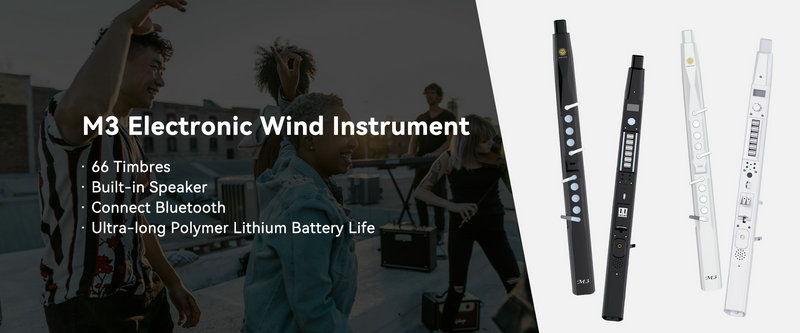Digital wind instruments (DWIs) communicate using several common MIDI communication protocols to interact with other devices, digital audio workstations (DAWs), and MIDI-compatible equipment. Here are some of the protocols:
MIDI Standard Messages:
These include Note On, Note Off, Control Change, Program Change, and others that facilitate the transfer of musical data such as notes and instrument changes 70.
MIDI Polyphonic Expression (MPE):
MPE is an extension of the MIDI protocol that allows for more nuanced expression of individual notes, including pitch bend and modulation per note, which is especially useful for wind instruments 70.
System Exclusive Messages (SysEx):
SysEx messages are used for communication that is specific to a particular manufacturer's devices and can include unique or complex data not covered by standard MIDI messages 70.
MIDI Time Code (MTC):
MTC is used for synchronization with other devices, such as sequencers and tape machines, that operate using SMPTE timecode.
MIDI Machine Control (MMC):
MMC is used to control devices that are part of a MIDI studio setup, including transport controls 70.
Note-Based Communication:
DWIs often use MIDI to send note messages that correspond to the pitch of the sound produced by the instrument, with the velocity of the note corresponding to the intensity of the performance.
MIDI 2.0:
The newer MIDI 2.0 protocol offers enhancements such as higher resolution for messages, increased number of channels, and better support for MPE .
These protocols enable DWIs to be integrated into a wide range of musical contexts, from live performances with other instruments to studio recording and production. MIDI's flexibility and universality make it a cornerstone of digital music communication.
SUNRISE MELODY M3 Electronic Wind Instrument - The best-selling digital wind instruments
. 66 Timbres
. Built-in Speaker
. Connect Bluetooth
. Ultra-long Polymer Lithium Battery Life



